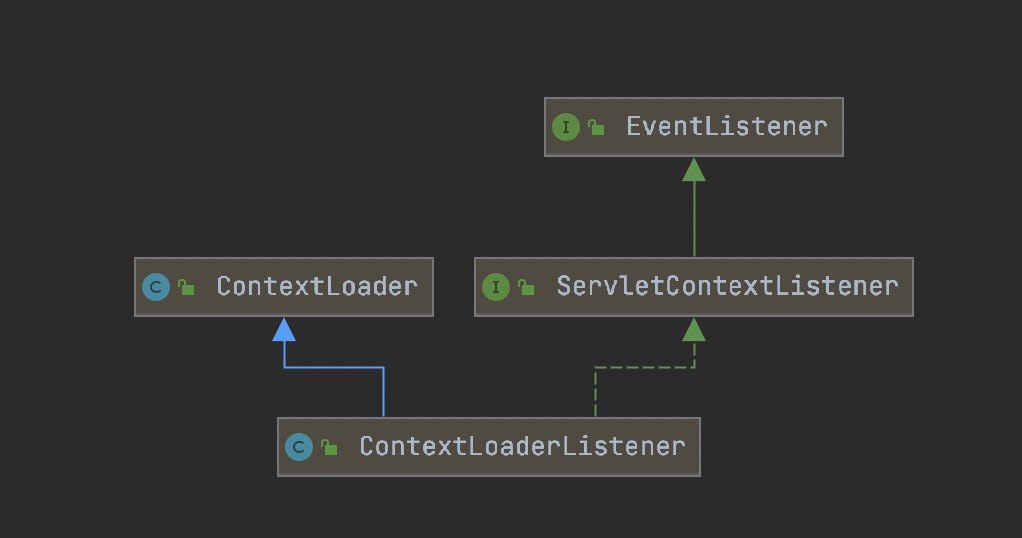设计模式系列10-观察者模式
观察者模式(Observer Pattern)定义了对象之间的一对多依赖,让多个观察者对象同 时监听一个主体对象,当主体对象发生变化时,它的所有依赖者(观察者)都会收到通 知并更新,属于行为型模式。观察者模式有时也叫做发布订阅模式。观察者模式主要用 于在关联行为之间建立一套触发机制的场景
应用场景
观察者模式在现实生活应用也非常广泛, 比如:微信朋友圈动态通知、消息通知、邮件通知、广播通知
实现方式
JDK
案例: 知识星球上有教师,当有问题提出时,所有教师都能收到这个问题. 论坛作为被观察者, 继承 Observable 类
论坛
public class Forum extends Observable{
private String name = "知识星球";
private static Forum forum = null;
private Forum(){}
public static Forum getInstance(){
if(null == forum){
forum = new Forum();
}
return forum;
}
public String getName() {
return name;
}
public void publishQuestion(Question question){
System.out.println(question.getUserName() + "在" + this.name + "上提交了一个问题。");
setChanged();
notifyObservers(question);
}
}
问题
public class Question {
private String userName;
private String content;
public String getUserName() {
return userName;
}
public void setUserName(String userName) {
this.userName = userName;
}
public String getContent() {
return content;
}
public void setContent(String content) {
this.content = content;
}
}
教师
教师作为观察者 实现 Observer 接口
public class Teacher implements Observer {
private String name;
public Teacher(String name){
this.name = name;
}
public void update(Observable o, Object arg) {
Forum forum = (Forum)o;
Question question = (Question)arg;
System.out.println("===============================");
System.out.println(name + "老师,你好!\n" +
"您收到了一个来自“" + forum.getName() + "”的提问,希望您解答,问题内容如下:\n" +
question.getContent() + "\n" +
"提问者:" + question.getUserName());
}
}
测试
public static void main(String[] args) {
Forum forum = Forum.getInstance();
Teacher tom = new Teacher("Tom");
Teacher mic = new Teacher("Mic");
Question question = new Question();
question.setUserName("小明");
question.setContent("观察者设计模式适用于哪些场景?");
forum.addObserver(tom);
forum.addObserver(mic);
forum.publishQuestion(question);
}
自定义实现
案例: 监听鼠标的事件
监听器
public class EventLisenter {
//JDK底层的Lisenter通常也是这样来设计的
protected Map<String,Event> events = new HashMap<String,Event>();
//事件名称和一个目标对象来触发事件
public void addLisenter(String eventType,Object target){
try {
this.addLisenter(
eventType,
target,
target.getClass().getMethod("on" + toUpperFirstCase(eventType),Event.class));
}catch (Exception e){
e.printStackTrace();
}
}
public void addLisenter(String eventType,Object target,Method callback){
//注册事件
events.put(eventType, new Event(target, callback));
}
//触发,只要有动作就触发
private void trigger(Event event) {
event.setSource(this);
event.setTime(System.currentTimeMillis());
try {
//发起回调
if(event.getCallback() != null){
//用反射调用它的回调函数
event.getCallback().invoke(event.getTarget(),event);
}
} catch (Exception e) {
e.printStackTrace();
}
}
//事件名称触发
protected void trigger(String trigger){
if(!this.events.containsKey(trigger)){return;}
trigger(this.events.get(trigger).setTrigger(trigger));
}
//逻辑处理的私有方法,首字母大写
private String toUpperFirstCase(String str){
char[] chars = str.toCharArray();
chars[0] -= 32;
return String.valueOf(chars);
}
}
标准事件Event
public class Event {
//事件源,事件是由谁发起的保存起来
private Object source;
//事件触发,要通知谁
private Object target;
//事件触发,要做什么动作,回调
private Method callback;
//事件的名称,触发的是什么事件
private String trigger;
//事件触发的时间
private long time;
public Event(Object target, Method callback) {
this.target = target;
this.callback = callback;
}
public Event setSource(Object source) {
this.source = source;
return this;
}
public Event setTime(long time) {
this.time = time;
return this;
}
public Object getSource() {
return source;
}
public Event setTrigger(String trigger) {
this.trigger = trigger;
return this;
}
public long getTime() {
return time;
}
public Object getTarget() {
return target;
}
public Method getCallback() {
return callback;
}
@Override
public String toString() {
return "Event{" + "\n" +
"\tsource=" + source.getClass() + ",\n" +
"\ttarget=" + target.getClass() + ",\n" +
"\tcallback=" + callback + ",\n" +
"\ttrigger='" + trigger + "',\n" +
"\ttime=" + time + "'\n" +
'}';
}
}
鼠标回调事件
public class MouseEventCallback {
public void onClick(Event e){
System.out.println("===========触发鼠标单击事件==========" + "\n" + e);
}
}
鼠标对象
public class Mouse extends EventLisenter {
public void click(){
System.out.println("调用单击方法");
this.trigger(MouseEventType.ON_CLICK);
}
}
事件枚举
public interface MouseEventType {
//单击
String ON_CLICK = "click";
}
测试
public static void main(String[] args) {
MouseEventCallback callback = new MouseEventCallback();
Mouse mouse = new Mouse();
mouse.addLisenter(MouseEventType.ON_CLICK,callback);
mouse.click();
}
Guava
基于Guava可以轻松落地观察者模式.
事件
public class GuavaEvent {
@Subscribe
public void subscribe(String str){
System.out.println("执行subscribe方法,传入的参数是:" + str);
}
}
通知
public static void main(String[] args) {
//消息总线
EventBus eventBus = new EventBus();
GuavaEvent guavaEvent = new GuavaEvent();
eventBus.register(guavaEvent);
eventBus.post("Tom");
}
源码体现
来看一下 Spring 中的 ContextLoaderListener 实现了 ServletContextListener 接口, ServletContextListener 接口又继承了 EventListener,在 JDK 中 EventListener 有非常 广泛的应用.

public class ContextLoaderListener extends ContextLoader implements ServletContextListener {
public ContextLoaderListener() {
}
public ContextLoaderListener(WebApplicationContext context) {
super(context);
}
public void contextInitialized(ServletContextEvent event) {
this.initWebApplicationContext(event.getServletContext());
}
public void contextDestroyed(ServletContextEvent event) {
this.closeWebApplicationContext(event.getServletContext());
ContextCleanupListener.cleanupAttributes(event.getServletContext());
}
}
观察者模式的优缺点
- 优点:
- 观察者和被观察者之间建立了一个抽象的耦合。
- 观察者模式支持广播通信。
- 缺点:
- 观察者之间有过多的细节依赖、提高时间消耗及程序的复杂度。
- 使用要得当,要避免循环调用。


